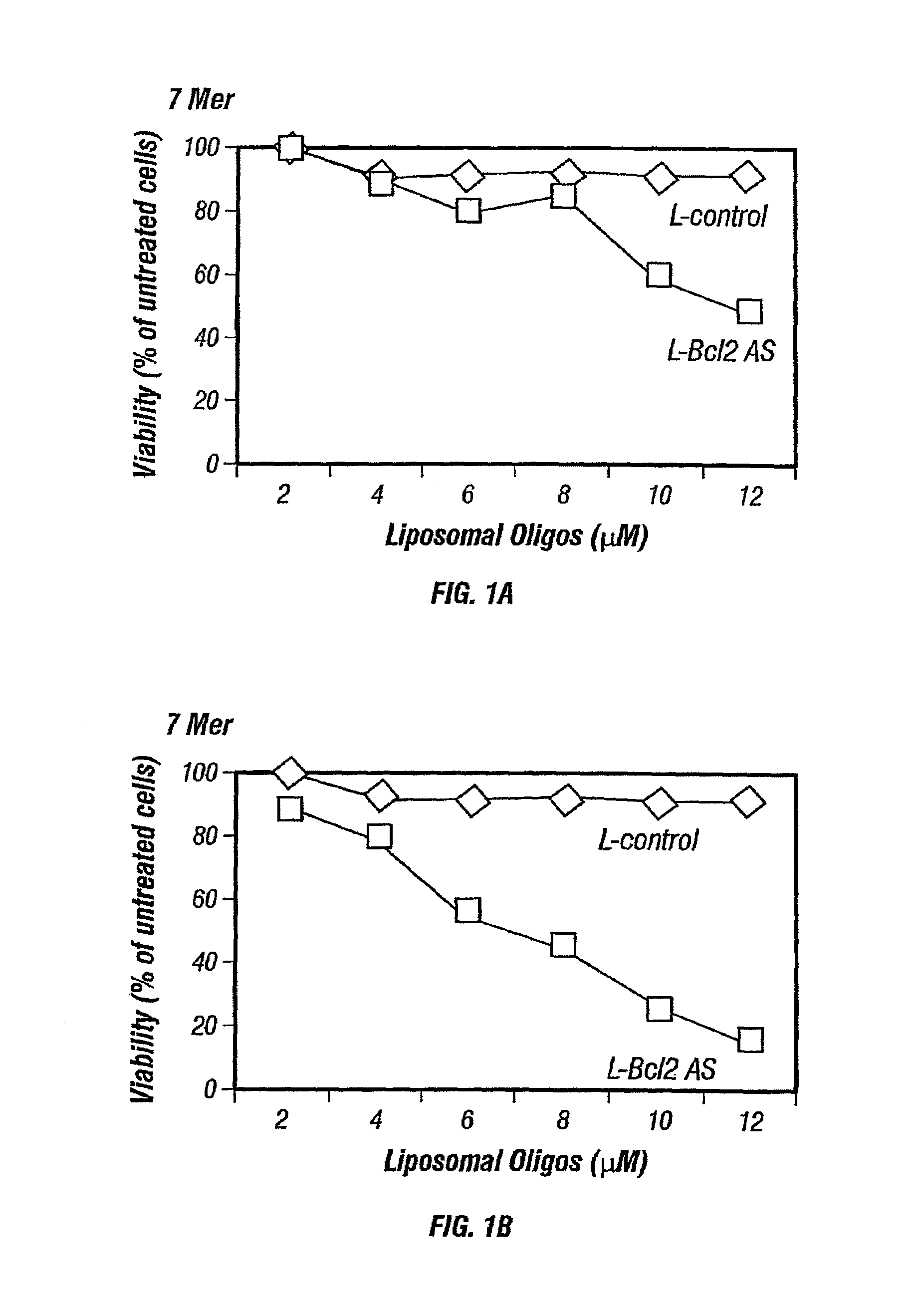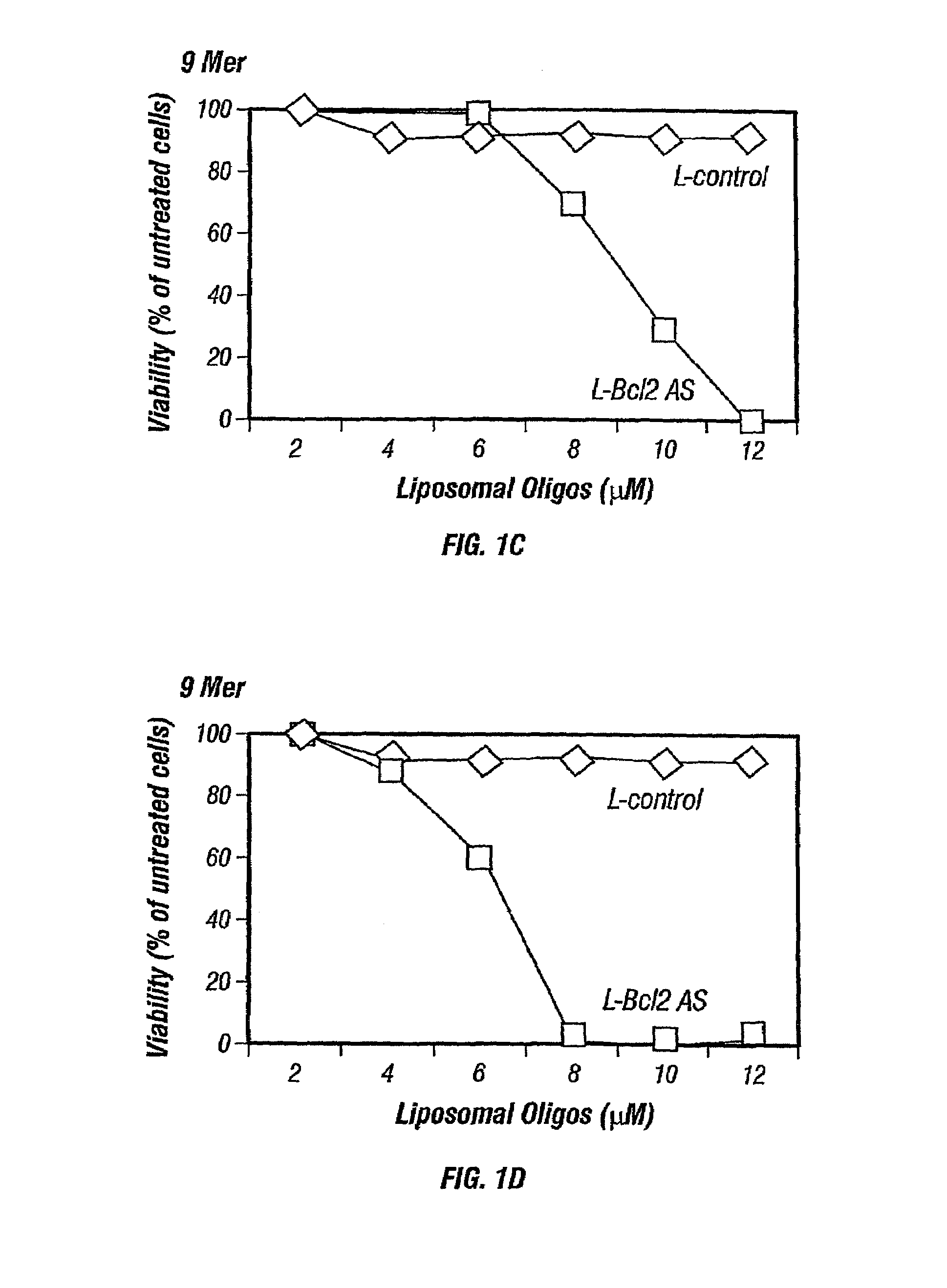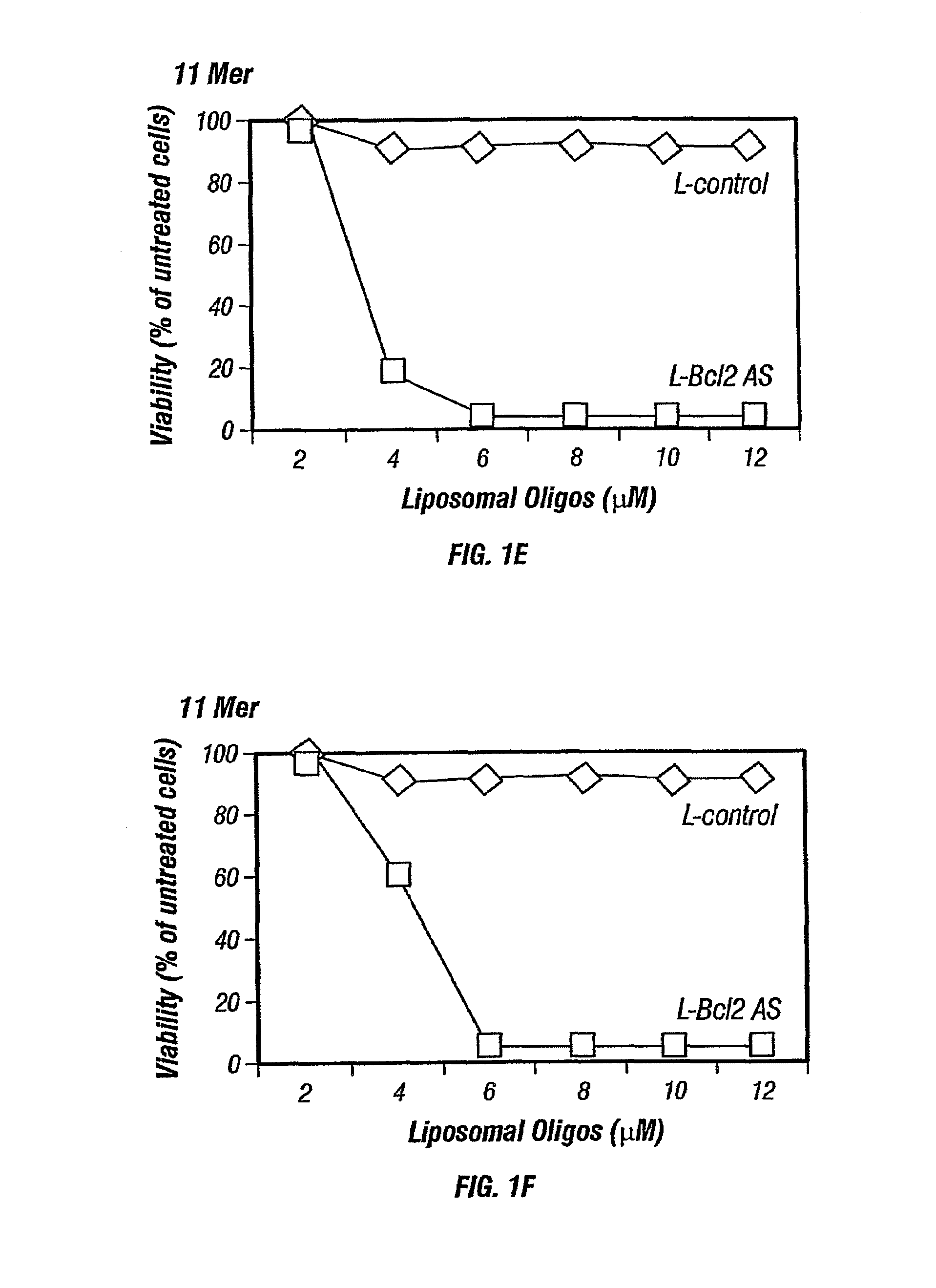Small oligonucleotides with anti-tumor activity
a technology of anti-tumor activity and anti-sense oligodeoxynucleotides, which is applied in the field of cancer therapy, can solve the problems of low cellular uptake of oligonucleotides, hampered therapeutic use of phosphodiester oligonucleotides, and no examples demonstrating the synthesis and use of anti-tumor oligonucleotides shorter than 15-mers
- Summary
- Abstract
- Description
- Claims
- Application Information
AI Technical Summary
Benefits of technology
Problems solved by technology
Method used
Image
Examples
example 1
Synthesis of Oligonucleotides
[0127]Nuclease-resistant p-ethoxy oligonucleotides, non-ionic phosphodiester analogs, were purchased from Oligo Therapeutics (Willsonville, Oreg.). Alternatively other oligonucleotides such as phosphodiester or phosphorothioate oligonucleotides may also be used and are commercially available. The following oligonucleotide sequences (also listed in Table 3), that corresponds to bcl-2 antisense, specific for the translation initiation site of human Bcl-2 mRNA, were synthesized and used: 5′CAGCGTGCGCCATCCTTCCC3′ (SEQ ID NO:1), a 20-mer; 5′GCCATCC3′ (SEQ ID NO:2) a 7-mer, 5′TCCTTCC3′ (SEQ ID NO:3), another 7-mer; 5′CGCCATCCT3′ (SEQ ID NO:4), a 9-mer; 5′ATCCTTCCC3′ (SEQ ID NO:5), another 9-mer; 5′GCGCCATCCTT3′ (SEQ ID NO:6), a 11-mer, 5′GCCATCCTTCC3′ (SEQ ID NO:7), another 11-mer; 5′GTGCGCCATCCTTCC3′ (SEQ ID NO:8), a 15-mer; and 5′TGCGCCATCCTTCCC3′ (SEQ ID NO:9), another 15-mer. As a control, a scrambled version of bcl-2 antisense ol...
example 2
Incorporation of Oligonucleotides into Liposomes
[0129]Liposomal p-Ethoxy Oligonucleotides
[0130]p-Ethoxy-oligonucleotides (also referred to as pE oligos) are dissolved in DMSO and the phospholipids (Avanti Polar Lipids, Alabaster, Ala.), for example the preferred neutral phospholipid dioleoylphosphatidylcholine (DOPC), is dissolved in tert-butanol. The lipid is then mixed with the antisense oligonucleotides. In the case of DOPC, the ratio of the lipid to the antisense oligos is 20:1. Tween 20 is added to the lipid:oligo mixture such that Tween 20 is 5% of the combined weight of the lipid and oligo. Excess tert-butanol is added to this mixture such that the volume of tert-butanol is at least 95%. The mixture is vortexed, frozen in a dry ice / acetone bath and lyophilized overnight. The lyophilized preparation is stored at −20° C. and can be used upto three months. When required the lyophilized liposomes are reconstituted in 0.9% saline. The average diameter of the particles obtained usi...
example 3
Cell Line and Viability Assays
[0131]Cell Line
[0132]CJ cells, a human transformed follicular lymphoma cell line bearing the t(14;18) translocation which overexpresses Bcl-2 protein, were used. CJ cells were grown in RPMI 1640 media (GIBCO, Grand Island, N.Y.) supplemented with 10% heat-inactivated fetal bovine serum (FBS).
[0133]Delivery of Liposomal Antisense Oligonucleotides to Cells
[0134]Thirty thousand cells / well were seeded in a 96-well plate in 0.1 mL of the respective medium. Cells were incubated with liposomal antisense oligonucleotides at final concentration of 2 to 12 μmol / L at 37° C. in a 5% CO2 incubator. Each experiment was done in triplicate and repeated at least 6-7 times.
[0136]The viability of the neoplastic cells was measured by the MTS dye (Promega, Wis.). After 5 days of incubation with liposomal antisense oligonucleotides, 100 μL of fresh medium and 20 μL of MTS dye were added to each well. After incubation for 3-4 hours at 37° C., the pla...
PUM
| Property | Measurement | Unit |
|---|---|---|
| Time | aaaaa | aaaaa |
| Mass | aaaaa | aaaaa |
| Fraction | aaaaa | aaaaa |
Abstract
Description
Claims
Application Information
 Login to View More
Login to View More - R&D
- Intellectual Property
- Life Sciences
- Materials
- Tech Scout
- Unparalleled Data Quality
- Higher Quality Content
- 60% Fewer Hallucinations
Browse by: Latest US Patents, China's latest patents, Technical Efficacy Thesaurus, Application Domain, Technology Topic, Popular Technical Reports.
© 2025 PatSnap. All rights reserved.Legal|Privacy policy|Modern Slavery Act Transparency Statement|Sitemap|About US| Contact US: help@patsnap.com



